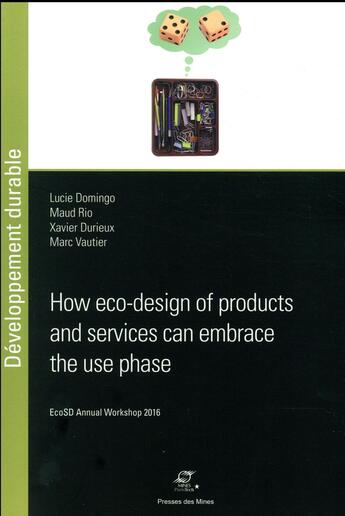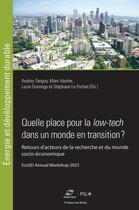Résumé:
The use phase is central to eco-design activities in all sectors. Various possibilities of eco-designing products are offered through usage consideration, matching different categories of products.
The in-use efficiency of high intensive energy-using products for instance is a deciding factor... Voir plus
The use phase is central to eco-design activities in all sectors. Various possibilities of eco-designing products are offered through usage consideration, matching different categories of products.
The in-use efficiency of high intensive energy-using products for instance is a deciding factor when eco-designing them. The European Commission recommends leading the global improvement of products' environmental footprint by reducing the impacts generated during use. Energy efficiency also contributes to optimising autonomy for transportation systems (automotive in particular), or mobile mechatronics products, and usually benefits to the user.
The use-phase integration is also critical to the planning of high maintenance operations and to the improvement of their environmental performance. For highly-technical products, from aircrafts to mundane products such as clothes, maintenance can be a major environmental burden. Even for relatively passive products but with a long shelf-life, the use-phase integration plays an important role in measuring the effect of an extended lifespan in absorbing the environmental impacts over use time. Furniture, buildings, food, etc., all benefit from usage integration through the development of realistic use conditions for adequate dimensioning of shelf-life, and through proper communication to users.
Around 70 researchers from industry, academia and governmental institutions participated in the 2016 workshop on how eco-design of products and services can embrace the use phase? and had the opportunity to exchange with experts.
This book contains a synthesis of the main contributions presented during this workshop divided into two sections: good practices for use phase integration during the eco-design of products and services, and, the opportunities to challenge this integration.
Donner votre avis









